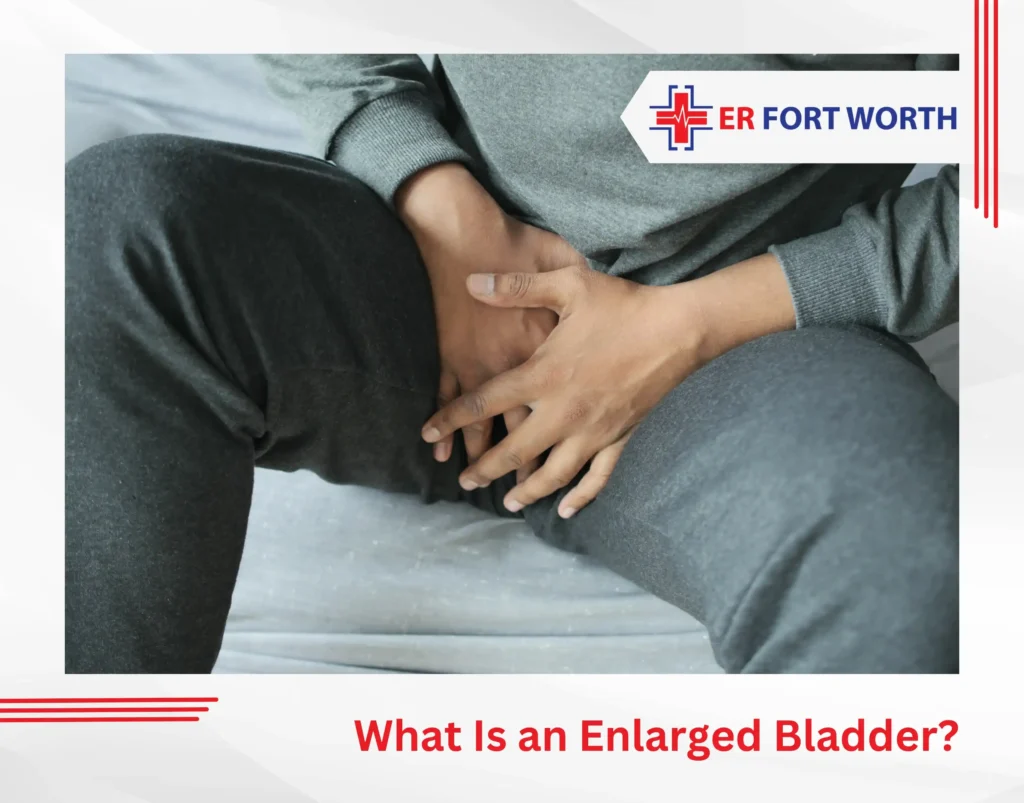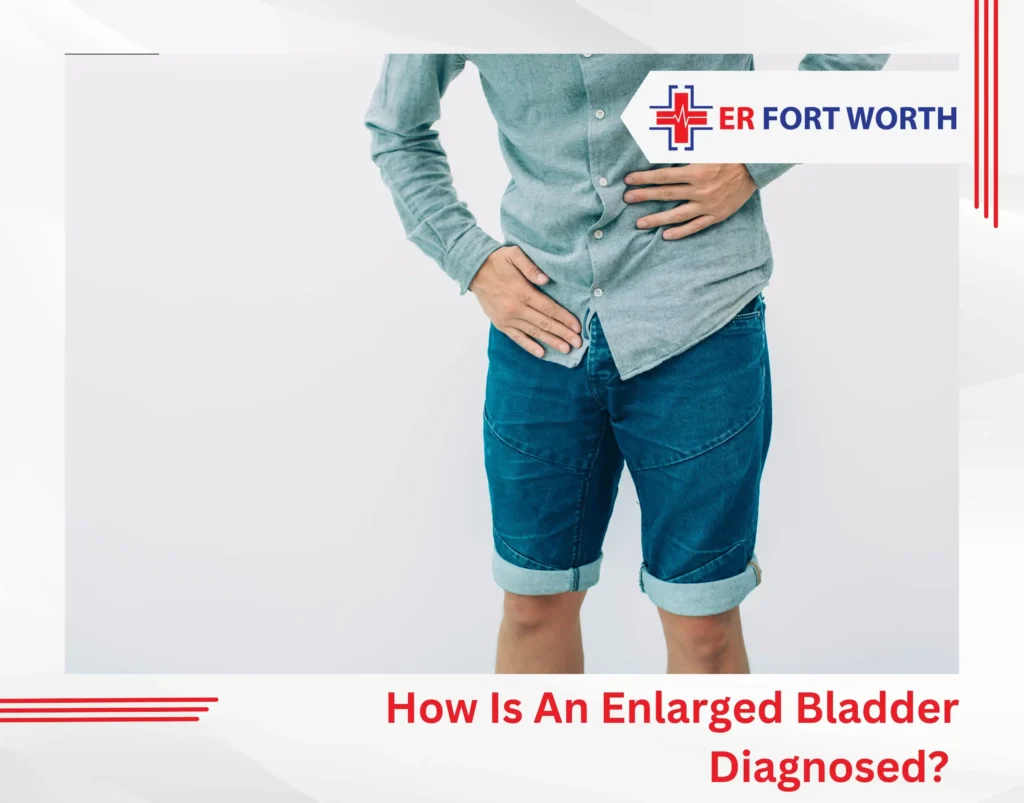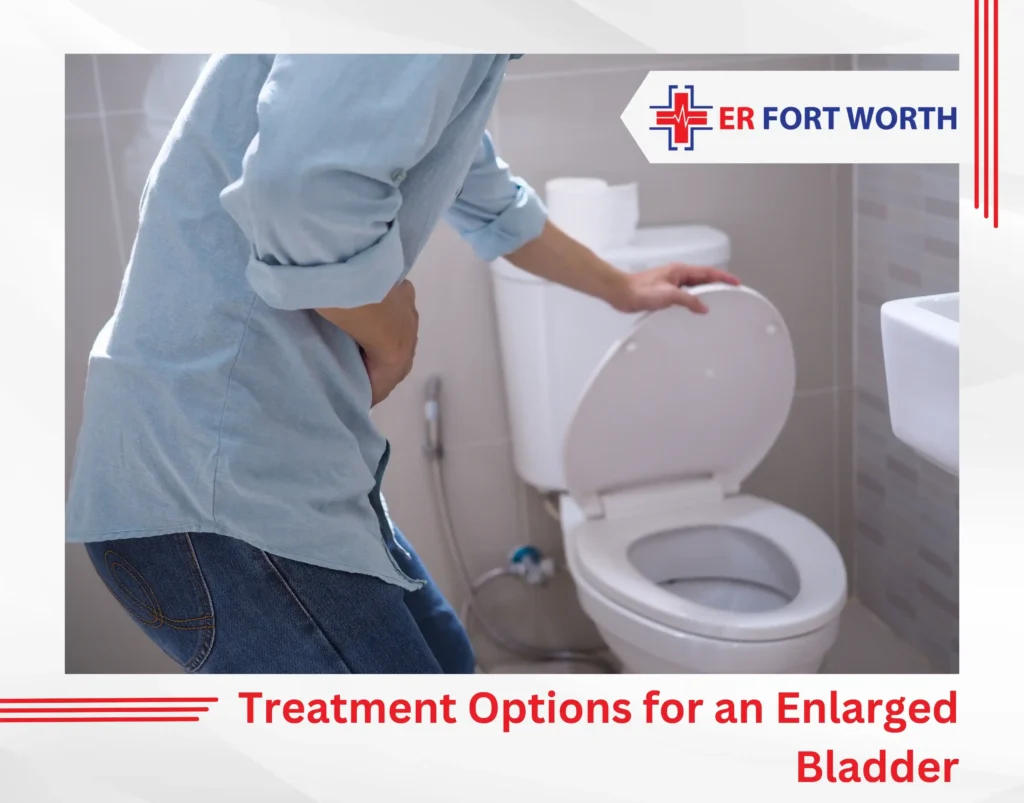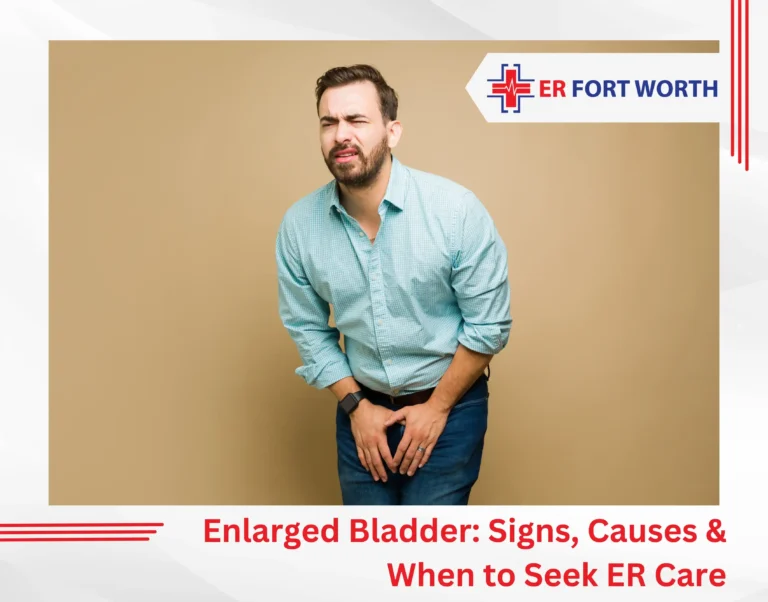You notice difficulty emptying your bladder completely, despite feeling the urgent need to urinate. This frustrating cycle of incomplete emptying can signal an enlarged bladder, a condition that affects bladder function and requires prompt medical attention.
Emergency warning signs include complete inability to urinate, severe abdominal pain, or signs of infection. While it may sound alarming, the good news is that an enlarged bladder is treatable with proper medications and management.
Let’s understand the causes and treatments for an enlarged bladder and how you can make it functional again normally.
What Is an Enlarged Bladder?

An enlarged bladder occurs when the bladder becomes stretched beyond its normal size. This stretching happens when urine consistently remains in the bladder after urination. The bladder is a small, balloon-shaped organ that stores urine until you’re ready to urinate.
Your bladder normally holds 16-24 ounces of urine before signaling the need to empty, but enlarged bladders can hold significantly more while losing normal sensation.
The medical term “bladder distension” describes this condition, which can develop gradually or appear suddenly depending on the underlying cause. It isn’t a disease in itself but rather a symptom that something else may be going on.
Causes of Enlarged Bladder
An enlarged bladder can develop for several reasons, often linked to how the bladder stores or empties urine. Below are the most common causes to help you understand what might be behind the problem.
1. Urinary Retention
Acute urinary retention represents a medical emergency where the bladder cannot empty despite feeling full. This can result from:
- Sudden prostate swelling (men)
- Medication side effects blocking bladder function
- Post-surgical complications
- Severe constipation creating pressure
Chronic urinary retention develops gradually, allowing the bladder to stretch over time without immediate emergency symptoms.
2. Urinary Obstruction
Blockages preventing normal urine flow include:
- Enlarged prostate (most common in men over 50)
- Kidney stones lodged in the urinary tract
- Urethral strictures from scarring or injury
- Tumors compressing urinary passages
These obstructions can create sudden emergencies when complete blockage occurs.
3. Neurological Conditions
Your brain and bladder work together through a network of nerves. When those signals are disrupted, due to conditions that disturb brain function, the bladder may not receive the message to contract or release urine. This can cause urine to build up unnoticed, eventually stretching the bladder.
4. Diabetes Complications
Diabetic bladder dysfunction develops when high blood sugar damages nerves that control bladder function. As a result, the bladder holds more urine than it should, slowly stretching and weakening the bladder wall.
5. Side Effects of Medications
When you take certain medications that affect nerves or muscles, such as antidepressants, antihistamines, or bladder relaxants, they can interfere with the bladder’s ability to contract. This may lead to incomplete emptying and gradual bladder enlargement.
Sign and Symptoms of Enlarged Bladder
An enlarged bladder often develops gradually, so symptoms may be subtle at first. However, as the condition progresses, you may start to notice the following signs and symptoms:
Early symptoms requiring medical evaluation:
- Frequent urination with small amounts
- Weak or interrupted urine stream
- Feeling of incomplete bladder emptying
- Increasing time needed to start urination
- Dribbling after urination ends
Progressive symptoms indicating worsening condition:
- Lower abdominal pressure or fullness
- Reduced urination frequency despite fluid intake
- Overflow incontinence (leaking when bladder overfills)
- Strain required to begin urination
- Bladder pain or discomfort
Emergency symptoms requiring immediate care:
- Complete inability to urinate for 6+ hours
- Severe pain with full bladder sensation
- Fever combined with urinary symptoms
- Visible blood in urine with retention
How Is An Enlarged Bladder Diagnosed?

Diagnosing an enlarged bladder involves understanding your symptoms, checking how well your bladder functions, and ruling out other possible issues. Here’s how it is normally diagnosed:
- Medical History and Symptom Review: Such as how often you urinate, whether you feel fully emptied after urination, and if you’ve had any pain or leakage.
- Physical Examination: A gentle examination of your lower abdomen can help the doctor detect a full or swollen bladder. In some cases, a rectal or pelvic exam may be done to check for physical blockages.
- Bladder Ultrasound: This non-invasive scan checks how much urine remains in your bladder after you go to the bathroom.
- Urinalysis: A simple urine test can help detect signs of infection, blood, or other abnormalities that may be contributing to your bladder symptoms.
Treatment Options for an Enlarged Bladder

Here are some of the top treatment options for an enlarged bladder:
1. Lifestyle Changes and Self-Care
For mild cases, simple changes in daily habits can help reduce symptoms and support bladder health:
- Timely urinating: Going to the bathroom on a set schedule to prevent overfilling
- Bladder training: Gradually increasing the time between urinations to rebuild bladder control
- Fluid management: Adjusting fluid intake to avoid both dehydration and overfilling
2. Medications
Depending on the cause, your physician might prescribe medications to help the bladder empty more effectively or reduce symptoms. Such medications include:
- Alpha-blockers to relax prostate muscles (men)
- Pain management for discomfort relief
- Antibiotics if infection is present
- Medication adjustment removing causative drugs
3. Catheterization
If the bladder can’t empty on its own, a catheter may be used to drain it. Options include a temporary, self-managed catheter to empty the bladder a few times. Moreover, if you’re struggling with it for a long time, you can also have a tube (non-portable) that stays in place for ongoing drainage.
4. Surgery
If there’s a clear physical blockage and other treatment options fail, you can opt for surgery. For instance, consider removing obstructions or performing bladder reconstruction or repair in severe cases where bladder function is significantly impaired.
5. Physical Therapy
Aside from conventional treatments, you can also go for pelvic floor therapy and bladder retraining exercises. It will help you regain better bladder control, especially if weak muscles are contributing to the problem.
Bottom Line
An enlarged bladder can be uncomfortable and disruptive, but it’s a condition that can be managed with the right approach. Whether it’s caused by urinary retention, nerve issues, blockages, or other health conditions, early identification and treatment can make a significant difference.
FAQs
When should I go to the ER for bladder problems?
Go to the ER immediately if you cannot urinate for 6+ hours, have severe pain with bladder fullness, fever with urinary symptoms, or blood in urine.
How long can you go without urinating safely?
Normal intervals are 3-4 hours. If unable to urinate for 6-8 hours with bladder fullness, seek emergency care to prevent kidney damage.
Can an enlarged bladder be life-threatening?
Yes, when complete retention occurs. Untreated acute retention can cause kidney failure, sepsis, and bladder rupture requiring emergency surgery.
What medications commonly cause bladder retention?
Antihistamines, antidepressants, opioid pain medications, and blood pressure drugs can all interfere with normal bladder emptying.
Is enlarged bladder more common in men?
Yes, men over 50 have higher risk due to prostate enlargement. However, women can develop retention from medications or nerve conditions




